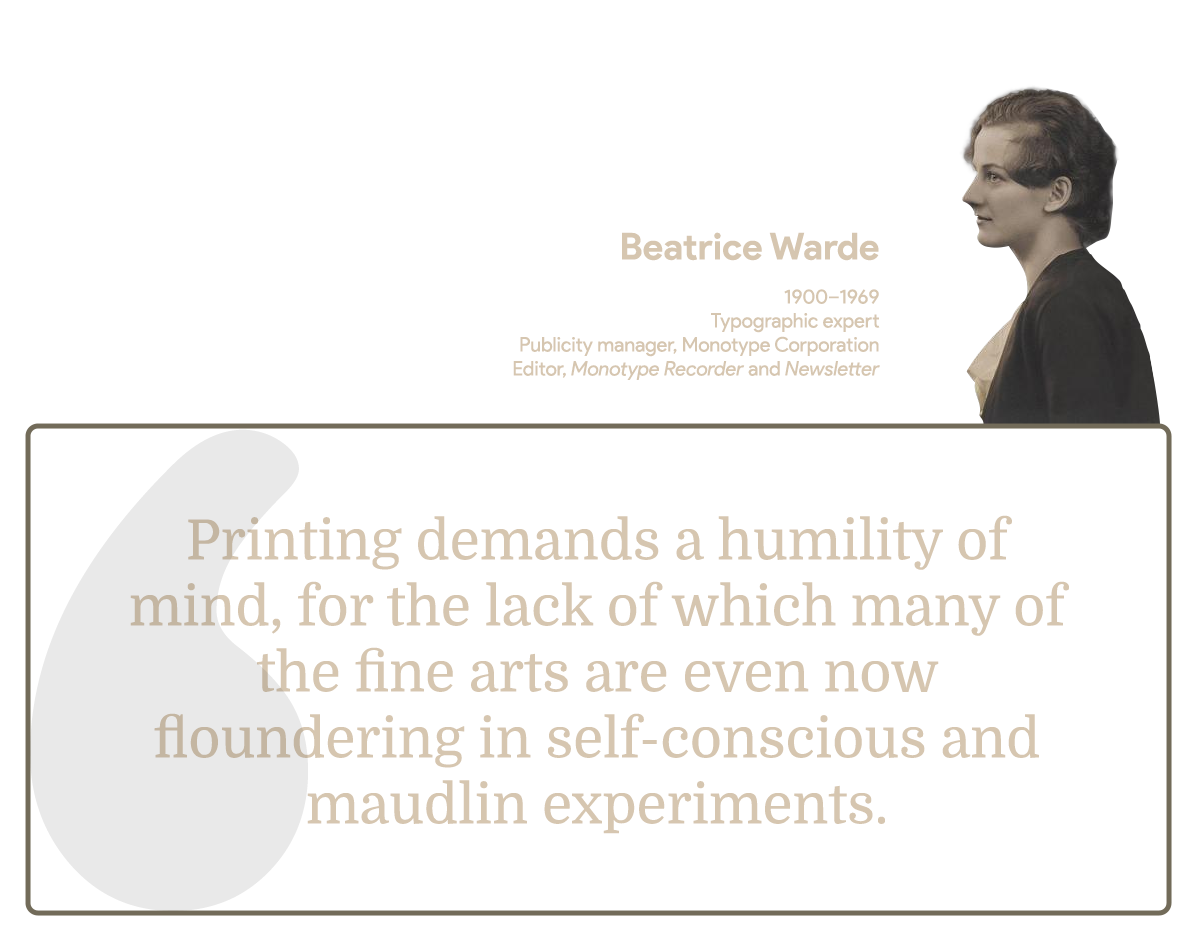The Crystal Goblet, or Printing Should Be Invisible

This essay by Beatrice Warde is reproduced here from a PDF of the essay on readings.design , which credits the text to http://gmunch.home.pipeline.com/typo-L/misc/ward.htm. Beatrice Warde's image: Adapted from an original image from Wikipedia; by Unknown photographer, 1925; Original publication: Eye Magazine , Immediate source: Eye Magazine. In this seminal 1932-essay on typography, Beatrice Warde compares typography and printing techniques to wine glasses. She says typography is a vessel for thought, and its design should not interfere with the message. She adds: "[T]he most important thing about printing is that it conveys thought, ideas, images, from one mind to other minds. This statement is what you might call the front door of the science of typography." Now please check the end note and explain why she had written under a male pseudonym. Imagine that you have before you a flagon of wine. You may choose your own favourite


